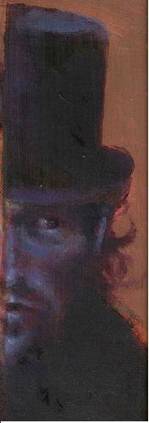Uncontrolled ROS play a role in disease and degenerative conditions

UNCONTROLLED ROS can inflict damage leading to health problems
Health Problems Resulting from Radical Damage
Each cell in the body is hit by approximately 10,000 radicals every day!
In trying to gain stability, by "stealing" (or donating) an electron, ROS radicals quickly react with most nearby molecules, including proteins, lipids, carbohydrates and DNA. When the "attacked" molecule loses (or gains) an electron, it becomes a radical itself, beginning a chain reaction which can result in the disruption of a living cell.
Most radicals can pull an electron from (i.e. oxidize) most biochemical compounds. The amount of damage incurred is dependent upon both the number of radical hits, and the amount of protection by the antioxidant "damage control" system.
Its all about balance. While oxygen and its ROS offspring are an essential part of many, normal body processes, aerobic cells may experience oxidative stress damage if their antioxidantprotection mechanisms are overwhelmed by excessivve amounts of ROS.
E.g. The process of neutralizing ROS contained in unsaturated oils use up the body's antioxidant supplies.
Examples of where ROS are OVER-produced and can result in significant damage to cells:
Body components damaged by ROS. Uncontrolled (excess) ROS can cause damage to the most oxidatively-sensitive cellular components:
This can cause local injury, cellular malfunction, and eventual organ malfunction leading to a variety of diseases, or even death.
Damage to unsaturated Lipids in Cell membranes and Lipoproteins. Polyunsaturated fatty acids (PUFAs) in cell membranes and lipoproteins are the key to bringing robust oxidation back to a low-energy producing or fermenting cell. However, unsaturated fatty acids will readily give up an electron when attacked by ROS ( Hydroxyl Radical in particular),in a self-perpetuating process called lipid peroxidation. The breakdown of the resultant lipid hydroperoxides often involves transition metal ion catalysis.
Cellular membranes and lipoproteins (vehicles in which lipids travel in the bloodstream) are prominent targets of ROS attack, undergoing numerous structurally and functionally disruptive effects:
| How ROS mediate cellular injury |
|---|
|
Superoxide O2• -and hydroxyl OH• radicals initiate peroxidation in the cellular, mitochondrial, nuclear, and endoplasmic reticulum membranes. This increases the cellular permeability for Ca2+ ions whose increased cellular concentrations damage the mitochondria. ROS also oxidize and degrade amino acids, and their oxidation of nuclear and mitochondrial DNA, results in strand breaks and other types of DNA damage. |
Protein damage. Proteins and nucleic acids have less reaction sites than PUFAs for ROS reactions to propagate chain reactions. Damage occurs only if radicals accumulate (which is not likely in normal cells), or if the damage is focussed on a particular site of the protein, such as if a protein binds a transition metal ion. Marx G, Chevion M; 1986 Stadtman ER, Oliver CN; 1991.

DNA damage. Oxidizing radicals readily attack DNA if they are formed in its vicinity as seen in radiation. As with proteins there seems little possibility that the damage may spread into a chain reaction. Again for damage to occur it must either be site specific (leading to strand breaks) or it must elude the repair systems before replication occurs leading to mutations. Cheesman and Slater, 1993
The extreme reactivity and multiple intermediates of oxygen make it difficult to detect and trace its course. Consequently, we look for the "footprints" of oxygen reactions to determine cause-effect relationships in stress responses
ROS-induced oxidative damages may be precursors to aging and diseases. E.g. cancer, heart disease, diabetes mellitus, atherosclerosis, rheumatoid arthritis, hypertension, sleep apnea, brain damage and dementia-related diseases such as Alzheimer's disease and Parkinson's disease.
ROS (or their metabolites) are highly chemically reactive and able to damage cells (occurring even in healthy cells):
Attack cell membranes - causing cell membrane dysfunction, altered receptor function;
Attack red blood cells;
Modify proteins: Deactivate enzymes, damage protein receptors;
Cause damage in DNA / RNA strands. Can trigger mutations in tissue and organs leading to cancer:
Cause damage in arteries / atherosclerosis / heart disease. Resulting in plaque buildup. Endothelial cells, smooth muscle cell and macrophages can release radicals, which cause lipid peroxidation. A continued high level of unopposed oxidized lipids causes endothelial cell damage in blood vessel walls and can lead to generation of foam cells and plaque, particularly by oxidizing LDL, which can directly damage endothelial cells;
Cause damage in the skin. Causing wrinkles and premature aging;
Cause brain damage. Can lead to dementia;